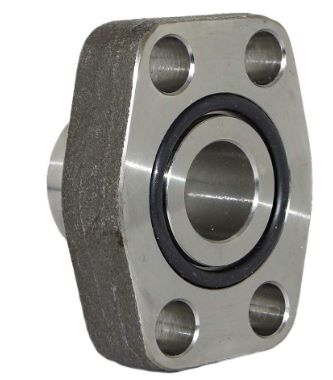Hydraulic systems are essential in many industries, from manufacturing to construction. They are used to power heavy machinery, control fluid flow, and generate pressure. However, hydraulic systems can be inefficient, leading to wasted energy and increased operating costs. One way to improve hydraulic efficiency is by using a Code 61 flange.
A Code 61 flange is a type of hydraulic fitting that is used to connect pipes and other components in a hydraulic system. It is named after the Hydraulic Institute Standard Code 61, which specifies the design and dimensions of these flanges. Code 61 flanges are typically made of steel or stainless steel and are available in a variety of sizes.
This blog post will discuss how Code 61 flanges can enhance hydraulic efficiency. We will cover the benefits of using a Code 61 flange, how it works, and installation and maintenance tips.
Benefits of using a Code 61 flange
There are many benefits to using a Code 61 flange, including:
➡️ Improved flow rate:
A Code 61 flange can help to improve flow rate by reducing the amount of turbulence in the fluid. This can lead to increased productivity and efficiency.
➡️ Reduced pressure loss:
A Code 61 flange can help to reduce pressure loss by providing a smooth and even flow path. This can lead to reduced energy consumption and increased system efficiency.
➡️ Increased system efficiency:
A Code 61 flange can help to increase system efficiency by reducing the amount of energy required to pump fluid through the system. This can lead to lower operating costs and improved system performance.
➡️ Reduced energy consumption:
A Code 61 flange can help to reduce energy consumption by reducing the amount of pressure loss in the system. This may result in less environmental impact and less running costs.
➡️ Increased system life:
A Code 61 flange can help to increase system life by reducing the amount of wear and tear on the system. This can lead to reduced maintenance costs and downtime.
Installation and Maintenance Tips
Here are the installation and maintenance tips for you:
➡️ How to install a Code 61 flange
Installing a Code 61 flange is a relatively simple process. First, you will need to clean and prepare the pipe or component that you will be connecting to the flange. Next, you will need to apply a gasket or O-ring to the flange. Finally, you will need to bolt the flange to the pipe or component.
➡️ How to maintain a Code 61 flange
Maintaining a Code 61 flange is also relatively simple. You should inspect the flange regularly for signs of wear and tear, such as cracks or corrosion. If you find any damage, you should replace the flange.
➡️ Troubleshooting common problems
If you are experiencing problems with your Code 61 flange, there are a few things you can do to troubleshoot the issue. First, check the flange for any signs of damage. Second, check the gasket or O-ring to ensure that it is properly installed and in good condition. Third, check the bolts to ensure that they are tight.
FAQs
What is a Code 61 flange?
➡️ A Code 61 flange is a type of hydraulic fitting that is used to connect pipes and other components in a hydraulic system. It is named after the Hydraulic Institute Standard Code 61, which specifies the design and dimensions of these flanges. Code 61 flanges are typically made of steel or stainless steel and are available in a variety of sizes.
Why is hydraulic efficiency important?
➡️ Hydraulic efficiency is important because it can help to reduce energy consumption, improve system performance, and extend the life of your equipment. When a hydraulic system is efficient, it can operate at higher pressures and flow rates, which can lead to increased productivity.
How can a Code 61 flange improve hydraulic efficiency?
➡️ A Code 61 flange can improve hydraulic efficiency in several ways. First, it can help to improve flow rate by reducing the amount of turbulence in the fluid. Second, it can help to reduce pressure loss by providing a smooth and even flow path. Third, it can help to increase system efficiency by reducing the amount of energy required to pump fluid through the system.
How does a Code 61 flange work?
➡️ A Code 61 flange works by providing a smooth and even flow path for the fluid. The design of the flange features a tapered bore, which helps to reduce turbulence and improve flow rate. The O-ring seal also helps to ensure a tight seal and prevent leaks.
Conclusion
A Code 61 flange is a great way to improve the efficiency of your hydraulic system. By reducing turbulence, pressure loss, and energy consumption, a Code 61 flange can help to improve system performance and extend the life of your equipment.
If you are looking for a way to improve the efficiency of your hydraulic system, consider using a Code 61 flange. Contact us today to learn more about our Code 61 flange products and services.
Post time: Aug-14-2024


